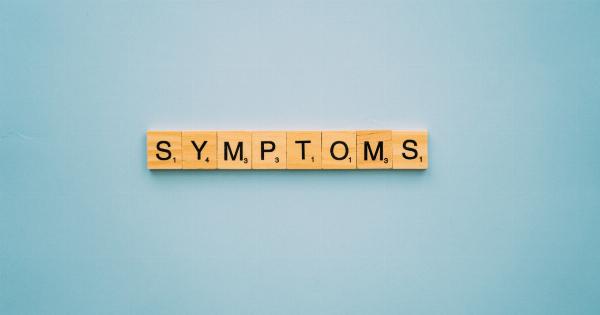Anemia is a condition characterized by a deficiency of red blood cells or a low concentration of hemoglobin in the blood. It can be caused by various factors such as iron deficiency, vitamin deficiency, chronic diseases, or genetic disorders.
Anemia can affect people of all ages and can lead to a range of symptoms. If you suspect you may have anemia, it is important to be aware of the warning signs so that you can seek appropriate medical attention. In this article, we will discuss the common warning signs of anemia.
1. Fatigue and Weakness
One of the most common symptoms of anemia is fatigue and weakness. This occurs because a lower number of red blood cells means less oxygen is transported to the body’s tissues.
As a result, you may feel easily tired, lacking in energy, and have difficulty performing everyday tasks.
2. Shortness of Breath
Since anemia reduces the oxygen-carrying capacity of the blood, individuals with anemia may experience shortness of breath, especially during physical exertion.
The body compensates by increasing the respiratory rate, but if the anemia is severe, it can lead to breathlessness even at rest.
3. Pale Skin
Anemia can cause a paleness in the skin due to the reduced amount of oxygen-rich blood. The skin may appear less pink or have a lighter complexion than usual. This symptom can be more noticeable in individuals with lighter skin tones.
4. Rapid Heartbeat
In order to compensate for the reduced oxygen in the blood, the heart may pump faster to try to increase blood flow. As a result, individuals with anemia may experience a rapid or irregular heartbeat, also known as tachycardia.
5. Dizziness and Fainting
A lack of oxygen to the brain can cause dizziness and lightheadedness. In severe cases of anemia, it may even lead to fainting spells.
If you constantly feel lightheaded or experience frequent fainting, it is important to consult a healthcare professional to determine the underlying cause.
6. Headaches
Anemia can sometimes cause frequent headaches or migraines. The decrease in oxygen-rich blood flow to the brain can trigger headaches, which may vary in intensity and duration.
7. Cold Hands and Feet
In individuals with anemia, the body may prioritize delivering oxygen to vital organs over extremities. As a result, you may experience cold hands and feet, as well as a general feeling of coldness.
This symptom is more common in individuals with severe anemia.
8. Brittle Nails and Hair Loss
Anemia can affect the health of your hair and nails. You may notice that your nails become brittle, weak, or have a spoon-shaped appearance. Hair loss or thinning hair may also occur as a result of inadequate oxygen supply to the hair follicles.
9. Cravings for Non-Food Items
A lesser-known symptom of anemia is pica, a condition characterized by cravings for non-food substances such as ice, dirt, or clay. This unusual craving may be the body’s attempt to obtain minerals lacking in the diet, such as iron or zinc.
10. Restless Legs Syndrome
Restless Legs Syndrome (RLS) is a condition characterized by an uncontrollable urge to move the legs, often accompanied by uncomfortable sensations.
RLS has been found to be more prevalent in individuals with iron-deficiency anemia, although the exact connection is still not fully understood.
If you experience any of these warning signs, it is crucial to consult with a healthcare professional for proper diagnosis and treatment.
Anemia can have various underlying causes, and the appropriate treatment will depend on addressing the root cause of the condition.


























